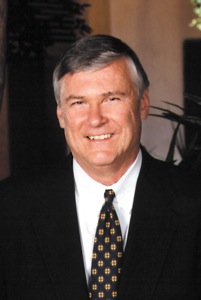
Mike Sullivan
When you plan and sell travel packages for baby boomers — people in their mid-40s to mid-60s — educational experiences should be at the top of your list.
Bank travel managers would be wise to create a focus with cruises that appeal to this target market. Affluent customers, as a rule, use many more banking services than other customers. Most banks are very much aware of this opportunity, targeting boomers for investment, savings and retirement business.
Learning for personal growth and for the sheer pleasure tends to be stronger in the second half of life. But there is more to it than that: Experiential learning also is a hallmark of the boomer generation.
In some ways, it’s easy to see why. Education is deeply ingrained in their history.
Boomers are the siblings of the “G.I. Generation” or the “Silent Generation,” whichproduced what is by far the largest one-generation jump in educational achievement in American history. The average length of schooling completed rose from the ninth grade for their parents to the 12th grade for them.
The percentage of 20-year-olds attending college tripled, thanks to the G.I. Bill. Math and science aptitudes rose sharply, propelling the Space Age, the period encompassing the activities related to the space race, space exploration and space technology spending. Boomer children got a strong education message from their parents.
Although they share many of the same attributes as the previous generation, boomers are different in a number of ways that are important to understand as you develop your bank’s boomer educational-travel plans.
“Musts” include the following:
Smaller travel groups. As one boomer put it, “I liked the size of the group and would not have been happier if it was larger.” The smaller size of the group makes possible the style of learning that boomers prefer. They want to be with people who are like themselves, not necessarily like their parents. Companionship, stimulation, and cultural and social experiences make travel fun for them.
High level of experiential learning. “I want to be in the place and get a feel for what it would be like to live there.” As they moved through young adulthood and on, they wanted possession experiences: for example, having things. Later on, they were into catered experiences: for example, having things done for them. In older adulthood, they are into life-satisfying experiences: for example, grandparenting or traveling to learn new things.
Travel that combines seeing and doing. Hands-on learning is part of a head rush for them. They seek exotic travel destinations and in-depth ways to discover the uniqueness of those destinations. Holistic travel, engaging all of their senses, is at the top of the list.
More free time. “I like instruction balanced with free time,” said another boomer. Structured free time, including independent meals, allows them to engage more in the experience.
A high level of activity. They enjoy a high level of health and fitness and are willing to get moving to see the world. The combination of recreation, exercise and discovery can be an ideal educational travel program.
Shorter travel programs. The tighter economic times have caused them to be working full or part time. Boomers will sign up for a trip when it fits their personal timeframe and when the length of the travel agrees with their work or volunteer schedule.
For information about bank sales training programs, contact Sullivan at mps50plus@aol.com or 704-554-7863 or visit www.linkedin.com/in/michaelpsullivan50plus.









